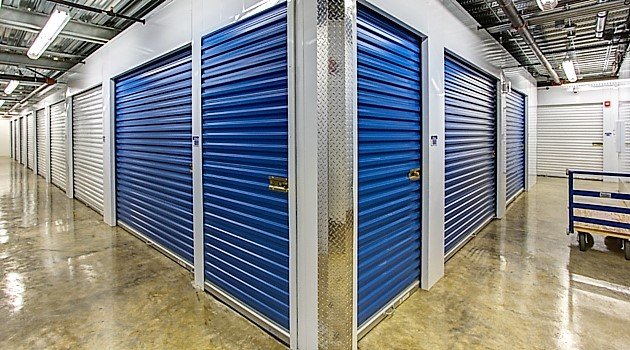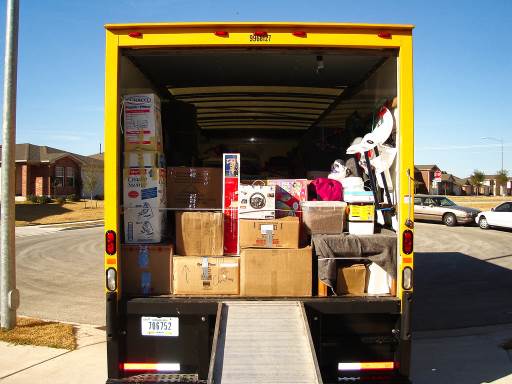Self-Storage or Full-Service Storage: Which is Right for You?
If you’ve looked for storage recently, you may have seen that there now different types of storage to choose from. First, there is the style of storage you’re probably more familiar with — Self-Storage. But there now so-called “Full-Service” storage operations. But which is right for your situation? Learn about each type below and decide for yourself.
Self-Storage
Self-storage is most likely the type of storage you’re most familiar with. You’ve probably seen them along the highway with row after row of painted garage doors. These are what is known as “drive-up access” storage units. When self-storage first came into being, these units were the only types available. But as the industry evolved, companies realized other customers preferred storage units that were temperature controlled and protected from the elements. So, they began building storage facilities that offered both indoor storage units and the aforementioned drive-up style units. Both indoor storage units and drive-up access storage units come in a variety of sizes ranging from as small as 5 x 5 to as large as 12 x 30. The cost for a typical 5 x 5 can range from $29 to $89 depending on the market. Other facilities offer specialty storage for RVs, boats, and wine.
After determining the size of storage unit you need and what will accommodate your budget, you bring your belongings to your storage unit via your own personal transportation (car, pickup, van), or you rent a moving truck. If you have one of the drive-up style storage units, you would park your vehicle in front of your unit and unload your belongings into the unit. If you have an indoor unit, many facilities have a covered loading and unloading area that you would park your vehicle at. You would then use provided dollies to move your stuff from your vehicle to the facility’s freight elevator, and then unload your belongings into your unit. Obviously, with the self-storage type of arrangement, it helps to have a group of friends and family members to help you out in case you’re moving a whole house-worth of stuff.
With most self-storage facilities, rentals are month-to-month so you are not committed to any long-term contract. Most will charge you for a lock if you don’t provide your own. You’ll also have to pay for insurance coverage unless your homeowner or rental insurance covers storage rental, which many do. Some companies also charge a one-time admin fee that ranges between $25-$50 to cover the cost of getting you put in their system and the associated paperwork.
These facilities normally have access hours from early in the morning until late at night. Some offer 24-hour access, while a minority of facilities are by appointment only.
Some storage facilities offer climate-controlled storage units, meaning the temperature and humidity level are kept within acceptable levels. Others offer heated storage units where your belongings (and you) stay comfortable during the winter months.
It’s a good idea to come to the facility that you’re thinking of storing at in order to tour it and get a first-hand look at the unit conditions and the upkeep of the property. Also, inquire as to the level of security. At high-end operations, you’ll find that they’ll most likely have 24-hour video surveillance, individual pin key code access at all entry points, and cut-proof locks on their storage units.
Full-Service Storage
Then there are full-service storage companies, otherwise known as on-demand storage or valet storage. These operations will pick-up, store, and return or deliver your stored items on demand.
Depending on the business model, some companies will pack up your belongings for free or a fee. With others, you are responsible for packing up your own belongings. For larger items such as furniture, customers should consider wrapping these in protective bubble wrap. Some full-service facilities like Cubiq.com may also offer free bins and boxes whereas others such as Clutter.com charge for boxes and packing supplies. Other companies such as MakeSpace.com provide bins to use for free, but these must be returned within a certain timeframe to avoid being charged for them.
Once you have your boxes and other items ready to go, you need to schedule an appointment to have the company pick them up. Depending on the company, the pickup date can range anywhere from a day to a week out from your call. Costs for this initial pickup range from free to $200 with additional hours billed at an hourly rate.
Once on site, the company will inventory the contents of each box and item as well as photograph the contents. Once this is entered into their computer system you can log into your account and inspect the inventory list to actually see what you’ve stored via the photographs.
Your items are then stored at the company’s warehouse. This can be located in the same city or it might be 20-30 miles away depending on the city. This can be a factor in how much time it takes to get your deliveries.
The warehouse conditions can also fluctuate from company to company. Some companies advertise that their warehouses are climate-controlled. Other companies, like MakeSpace, say they will “use commercially reasonable efforts” to maintain the temperature to within a range of 55 degrees to 90 degrees. They also stipulate they cannot guarantee that mold will not develop on your belongings.
If you need to retrieve some or all of your items, you’ll need to schedule a delivery date and time. As with the pickup, this date can range up to week. Costs for deliveries vary, with some companies offering one free delivery per month while others charge a fee for deliveries. Delivery of larger items such as furniture is often an extra cost.
Minimum storage times also vary with many offering the typical month-to-month storage arrangement while others have a minimum three- or five-month contract.
In regard to storage costs, this will vary depending on the market you’re in. Cities such as San Francisco and Boston have the highest prices, whereas other parts of the country are less. We’ve seen prices that range from $45 to $100 for a 5 x 5 not including any additional fees for pickup and delivery.
Pros and Cons of Self-Storage vs. Full-Service Storage
Self-Storage
- Pro: Access your belongings when you want. Also, facilities typically have long hours
- Pro: Lower rates than Full-Service
- Pro: Single access to your belongings. Since you move them in and out and have the only key to your unit, there’s no chance of mishaps when others handle your stuff
- Con: Not all storage facilities are the same. Variables in security, cleanliness, pest control, customer service
Full-Service Storage
- Pro: Items picked up and delivered directly to you
- Pro: Some companies will pack belongings for you
- Pro: Items are photographed and inventoried. Customers can view inventory and photos online
- Con: Some companies charge pickup fees and delivery fees
- Con: Some companies have a minimum storage term of as long as 6 months
- Con: Cannot visit the storage site to get stuff out yourself – must be delivered
- Con: Need to schedule date and time for deliveries. Can be a week or more out. Delivery window can be long too – between 1 and 6 hours
Summary
As you can imagine, both self-storage and full-service storage have their pros and cons. When you contemplate renting storage, you’ll want to decide how important the factors of convenience, price, and access are to you.

About the Author: Derek Hines
Digital Marketing Specialist
Derek is originally from the great state of Wisconsin (go Badgers), but is slowly becoming a Pacific Northwesterner. As part of the Digital Marketing team, he writes extensively on storage, moving and life for West Coast Self-Storage, based in Everett, Washington.

